The Optimization Study of Rheological Characteristics of Wind Power Grease Based on Gel-State
Abstract
1. Introduction
2. Results and Discussion
2.1. Effect of Different Additives on the Rheological Characteristics of the Gel-State Mobil SHC 461WT Grease
2.1.1. Lubrication Characterization of the Gel-State Mobil SHC 461WT Grease
2.1.2. Effects of RFM3000 on the Rheological Characteristics of the Gel-State Mobil SHC 461WT Grease
2.1.3. Effect of SK3115 on the Rheological Characteristics of the Gel-State Mobil SHC 461WT Grease
2.1.4. Effect of PV611 on the Rheological Characteristics of the Gel-State Mobil SHC 461WT Grease
2.2. Comparative Experimental Rheological Analysis of the Gel-State of Mobil SHC 461WT Grease with Different Additives
2.2.1. Analysis of Three Different Additives on the Viscoelastic Characteristics of the Gel-State of Mobil SHC 461WT Grease
2.2.2. Analysis of Three Different Additives on the Flow Characteristics of the Gel-State Mobil SHC 461WT Grease
2.2.3. Analysis of Three Different Additives on the Viscosity–Temperature Characteristics of the Gel-State Mobil SHC 461WT Grease
2.2.4. Rheological Modeling
3. Conclusions
3.1. Conclusions
- (1)
- The best additive to improve the overall lubricating performance of the gel-state grease is the RFM3000 additive. In rheological experiments, the additive maintains the molecules of sample 2 in a stable state, which can effectively adapt to various temperature environments and maintain the stability of the internal structure. As the temperature rises, it ensures that the sample maintains excellent fluidity. This highlights that additive RFM3000 further reduces friction and drag in existing gel-state wind turbine greases, reducing the amount of energy required inside wind turbines. This will help to reduce power loss in the power generation process and reduce the energy consumption of the whole wind turbine, thus further reducing carbon emissions.
- (2)
- Sample 3 has lower values of flow point strain only at 30 °C than at other temperatures, while the rheological characteristics are less promising at other temperatures than the other samples. Although the rheological characteristics of sample 4 are slightly better than those of sample 1, there is still a large gap compared to sample 2. Above all, both samples 3 and 4 are not suitable as the gel-state grease for 1.5 MW large horizontal axis wind turbines.
- (3)
- The H–B model can effectively reveal the sensitivity of gel-state grease to temperature changes. The intrinsic equations of the gel-state grease obtained by the H–B model can effectively predict the rheological characteristics of the gel-state grease at different temperatures, which provides a reasonable reference for the rheological characteristics of the gel grease under different conditions.
3.2. Future Perspectives
- (1)
- Regarding the problem of how to reduce the carbon emissions of 1.5 MW large-scale horizontal axis wind turbines, this paper only investigates and optimizes the performance of the gel-state grease. The wind turbine in the actual work operation process, the structure of the components of the force, material, load, and other factors will also affect the efficiency of the wind turbine and failure rate. Therefore, the follow-up work needs to take full account of the impact of these factors and conduct a more comprehensive analysis.
- (2)
- Regarding the performance improvement of additives for the gel-state grease, the RFM3000 additive, which has the best performance improvement effect in this paper, also has some problems in the experiment. In future research, the selection and application of other additives can be explored to minimize their adverse environmental impacts and further improve the eco-friendliness of gel-state greases. Meanwhile, it is necessary to introduce equipment such as a four-ball friction and wear tester and SRV tester to test the tribological wear of the optimized gel-state grease, which is the direction of our further research.
4. Materials and Methods
4.1. The Rheological Performance Test Program for the Gel-State Mobil SHC 461WT Grease
Experimental Equipment
4.2. Rheological Experimental Design and Parameterization
4.3. Selection of Grease and Additives
Author Contributions
Funding
Institutional Review Board Statement
Informed Consent Statement
Data Availability Statement
Conflicts of Interest
References
- Gao, J.; Gao, F.; Yin, B.; Zhang, M. International Trade as a Double-Edged Sword: The Perspective of Carbon Emissions. Front. Energy Res. 2021, 9, 2021. [Google Scholar] [CrossRef]
- Satsita, S.; Khasanova, A. Green economy as a tool for sustainable development and a factor contributing to the formation of a low-carbon economy. BIO Web Conf. 2024, 82, 04003. [Google Scholar]
- Gulis, G.; Krishnankutty, N.; Boess, E. Environmental Impact Assessment, Human Health and the Sustainable Development Goals. Int. J. Public Health 2022, 67, 3389. [Google Scholar] [CrossRef]
- Zeng, Q.; Destek, M.; Khan, Z. Green innovation, foreign investment and carbon emissions: A roadmap to sustainable development via green energy and energy efficiency for BRICS economies. Int. J. Sustain. Dev. World Ecol. 2024, 31, 191–205. [Google Scholar] [CrossRef]
- Kong, D.; Dai, Z. Forecasting urban carbon emissions using an Adaboost-STIRPAT model. Front. Environ. Sci. 2023, 28, 11. [Google Scholar] [CrossRef]
- Shan, Z.; Tan, Q. Optimization model of low-carbon technology adoption timing for coal power under decarbonization and flexibility demand: Empirical study in Beijing-Tianjin-Hebei region, China. Appl. Energy 2024, 358, 122647. [Google Scholar] [CrossRef]
- Roga, S.; Bardhan, S. Recent technology and challenges of wind energy generation: A review. Sustain. Energy Technol. Assess. 2022, 52, 102239. [Google Scholar] [CrossRef]
- Murshed, M.; Ozturk, I. Rethinking energy poverty reduction through improving electricity accessibility: A regional analysis on selected African nations. Energy 2022, 267, 126547. [Google Scholar] [CrossRef]
- Dawn, S.; Rao, G.S.; Vital, M.L.N.; Rao, K.D.; Alsaif, F.; Alsharif, M.H. Profit Extension of a Wind-Integrated Competitive Power System by Vehicle-to-Grid Integration and UPFC Placement. Energies 2023, 16, 6730. [Google Scholar] [CrossRef]
- Peng, H.; Zhang, H.; Fan, Y.; Shangguan, L.; Yang, Y. A Review of Research on Wind Turbine Bearings’ Failure Analysis and Fault Diagnosis. Lubricants 2023, 11, 14. [Google Scholar] [CrossRef]
- Peng, H.; Li, S.; Shangguan, L.; Fan, Y.; Zhang, H. Analysis of Wind Turbine Equipment Failure and Intelligent Operation and Maintenance Research. Sustainability 2023, 15, 8333. [Google Scholar] [CrossRef]
- Ren, J.; Gong, K.; Zhao, G.; Wang, X.; Wu, X. Investigation of the Interaction, Rheological and Tribological Properties of Bis(pinacolato)diboron with Lithium Grease. Tribol. Lett. 2021, 69, 166. [Google Scholar] [CrossRef]
- Ahme, L.; Kuhn, E.; Delgado, M. An approach of the internal friction-dependent temperature changes for conventional and pure biogenic lubricating greases. Friction 2024, 12, 780–795. [Google Scholar] [CrossRef]
- Nan, B.; Chi, Y.; Jiang, Y.; Bai, Y. Wind Load and Wind-Induced Vibration of Photovoltaic Supports: A Review. Sustainability 2024, 16, 2551. [Google Scholar] [CrossRef]
- Tian, C.; Xu, H.; Dong, J. A novel layered double hydroxides oleogel lubricant: Inspired by conventional greases. Tribol. Int. 2023, 187, 108746. [Google Scholar] [CrossRef]
- Liu, G.; Feng, Y. Synovial fluid-inspired biomimetic lubricating microspheres: Zwitterionic polyelectrolyte brushes-grafted microgels. Friction 2023, 11, 938–948. [Google Scholar] [CrossRef]
- Ghosh, D.; Mulvee, M.T.; Damodaran, K.K. Tuning Gel State Properties of Supramolecular Gels by Functional Group Modification. Molecules 2019, 24, 3472. [Google Scholar] [CrossRef]
- Shitara, Y.; Kanno, A.; Kaimai, T.; Mori, S. Effect of Amide Molecular Structure on Tribological Properties of Thermoreversible Gel Lubricant. Tribol. Online 2010, 5, 6. [Google Scholar] [CrossRef]
- Gokdemir, G.; Doner, N.; Sert, Z. Effects of CuO, TiO2 and graphite microparticles on the heat transfer properties of greases. Eng. Sci. Technol. Int. J. 2022, 30, 101044. [Google Scholar] [CrossRef]
- Akɪn-Olçum, G.; Böhringer, C.; Rutherford, T.; Schreiber, A. Economic and environmental impacts of a proposed ‘Carbon adder’ on New York’s energy market. Clim. Policy 2021, 21, 6. [Google Scholar] [CrossRef]
- Guo, H.; Pang, J.; Adukure, A.; Iglesias, P. Influence of Hydrogen Bonding and Ionicity of Protic Ionic Liquids on Lubricating Steel–Steel and Steel–Aluminum Contacts: Potential Ecofriendly Lubricants and Additives. Tribol. Lett. 2020, 64, 114. [Google Scholar] [CrossRef]
- Mousavi, S.; Heris, S. Experimental investigation of ZnO nanoparticles effects on thermophysical and tribological properties of diesel oil. Int. J. Hydrogen Energy 2020, 45, 23603–23614. [Google Scholar] [CrossRef]
- Mousavi, S.; Heris, S.; Hosseini, M. Experimental investigation of MoS2/diesel oil nanofluid thermophysical and rheological properties. Int. Commun. Heat Mass Transf. 2019, 108, 104298. [Google Scholar] [CrossRef]
- Xiong, H.; Lu, P.; Xiang, S. Tribological properties of fluorinated graphene as a polyurea grease additive. Eng. Technol. II 2023, 48, 5. [Google Scholar]
- Liang, C.; Lu, L.; Liang, Y. Calcium Carbonate in Grease. Eng. Sci. Technol. I 2023, 52, 4. [Google Scholar]
- Xu, Z.; Cai, H.; Wang, Z. Effect of excess thickener components on the microstructure and properties of lithium grease. Tribology 2023, 62, 1095. [Google Scholar]
- Dai, Y.; Lu, F.; Tang, Y.; Wang, Y.; He, X.; Wang, T.; Wu, J. The Simulation of Ester Lubricants and Their Application in Weak Gel Drilling Fluids. Gels 2024, 10, 178. [Google Scholar] [CrossRef]
- Jopen, M.; Paulus, M.; Sternemann, C.; Degen, P.; Weberskirch, R. Comparative Studies on the Organogel Formation of a Polyester in Three Different Base Oils by X-ray Analysis, Rheology and Infrared Spectroscopy. Gels 2023, 9, 696. [Google Scholar] [CrossRef]
- Schwack, F.; Bader, N.; Leckner, J.; Demaille, C.; Poll, G. A study of grease lubricants under wind turbine pitch bearing conditions. Wear 2020, 454–455, 203335. [Google Scholar] [CrossRef]
- Ng, K.; Liew, K.; Lim, E. Role of Eco-Friendly Bio-Based Graphene-Oil Nanofluids on Friction Reduction for Wind Turbine Application. IOP Conf. Ser. Earth Environ. Sci. 2021, 943, 012012. [Google Scholar] [CrossRef]
- Saidi, M.Z.; El Moujahid, C.; Pasc, A.; Canilho, N.; Delgado-Sanchez, C.; Celzard, A.; Fierro, V.; Kouitat-Njiwa, R.; Chafik, T. Enhanced tribological properties of wind turbine engine oil formulated with flower-shaped MoS2 nano-additives. Colloids Surf. A Physicochem. Eng. Asp. 2021, 620, 126509. [Google Scholar] [CrossRef]
- Wu, C.; Xie, Y.; Zhao, H.; Yang, H.; Li, X.; Ni, J. Effects of hBN and CaCO3 Nanoparticles on Tribological and Vibration Properties of Polyurea Grease on Rolling Bearing. Tribol. Lett. 2022, 70, 95. [Google Scholar] [CrossRef]
- Li, X. Petroleum Products Application Research. Development and application of generator bearing grease for wind turbines. Pet Prod. Appl. Res. 2023, 2, 10–16. [Google Scholar]
- Rosenkranz, L.; Richter, S.; Jacobs, G. Influence of temperature on wear performance of greases in rolling bearings. Ind. Lubr. Tribol. 2021, 6, 73. [Google Scholar] [CrossRef]
- Pinilla-Peñalver, E.; Cantero, D.; Romero, A.; Sánchez-Silva, L. Exploring the Impact of the Synthesis Variables Involved in the Polyurethane Aerogels-like Materials Design. Gels 2024, 10, 209. [Google Scholar] [CrossRef] [PubMed]
- Wang, Y.; Yu, Q.; Bai, Y.; Zhang, L.; Zhou, F. Self-Constraint Gel Lubricants with High Phase Transition Temperature. ACS Sustain. Chem. Eng. 2018, 11, 15801–15810. [Google Scholar] [CrossRef]
- Cao, Q.-L.; Wu, W.-T.; Liao, W.-H.; Feng, F.; Massoudi, M. Effects of Temperature on the Flow and Heat Transfer in Gel Fuels: A Numerical Study. Energies 2020, 13, 821. [Google Scholar] [CrossRef]
- Peng, H.; Li, S.; Shangguan, L.; Zhang, H.; Zhao, D. Research on the Rheological Characteristics of Wind Power Grease Based on Rheological Parameters. Lubricants 2023, 11, 299. [Google Scholar] [CrossRef]
- Szołtysik, M.; Kucharska, A.Z.; Dąbrowska, A.; Zięba, T.; Bobak, Ł.; Chrzanowska, J. Effect of Two Combined Functional Additives on Yoghurt Properties. Foods 2021, 10, 1159. [Google Scholar] [CrossRef]
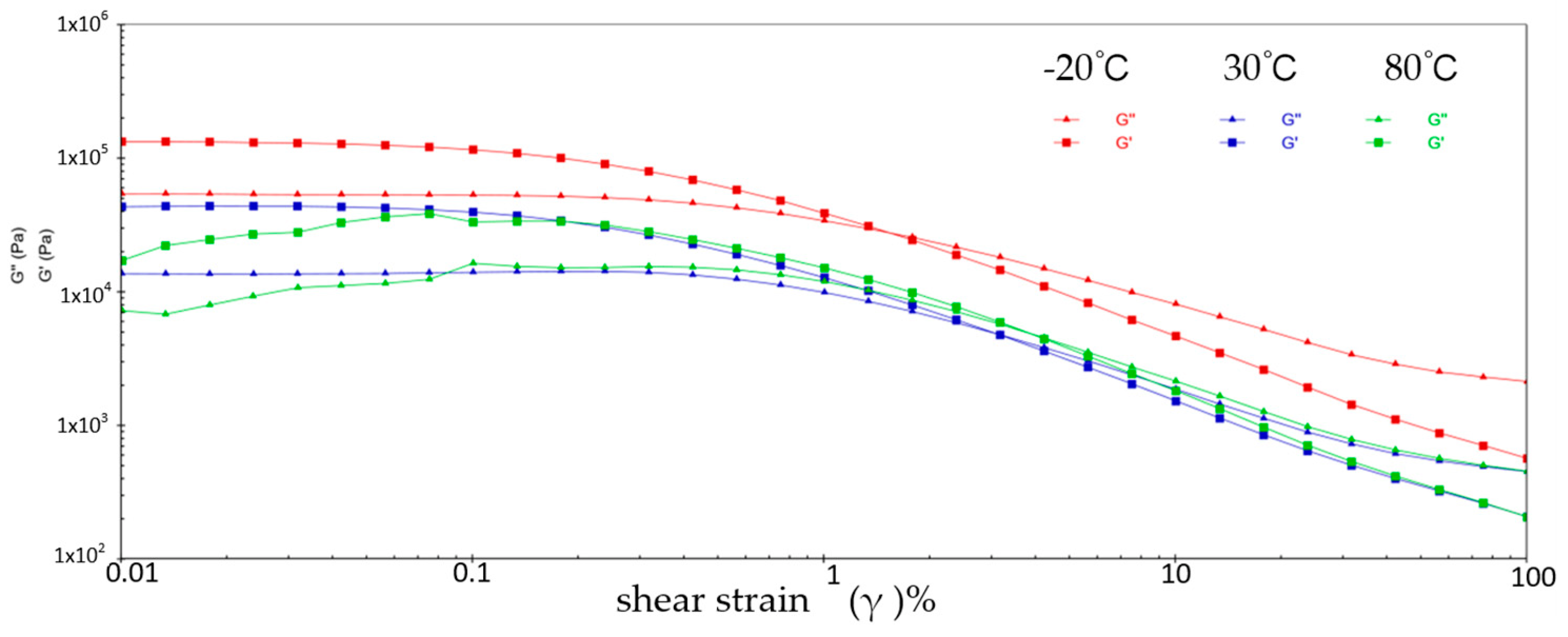
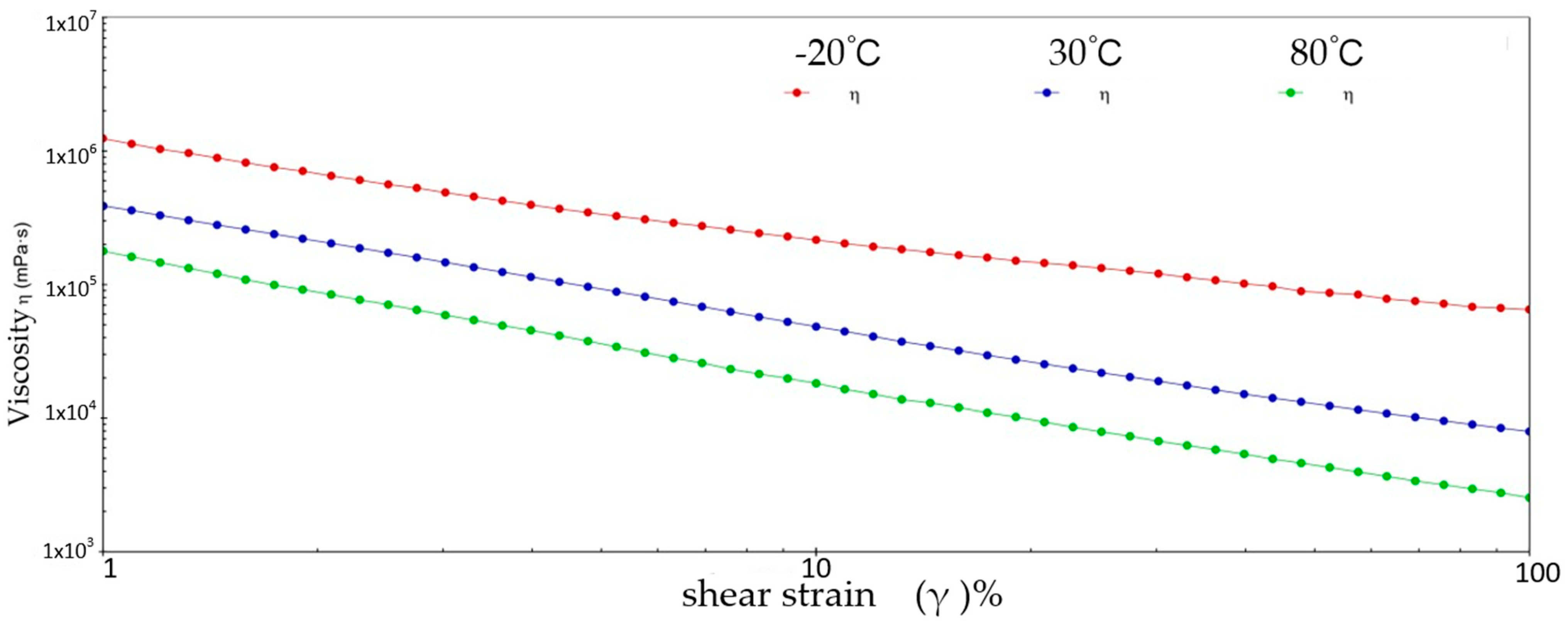
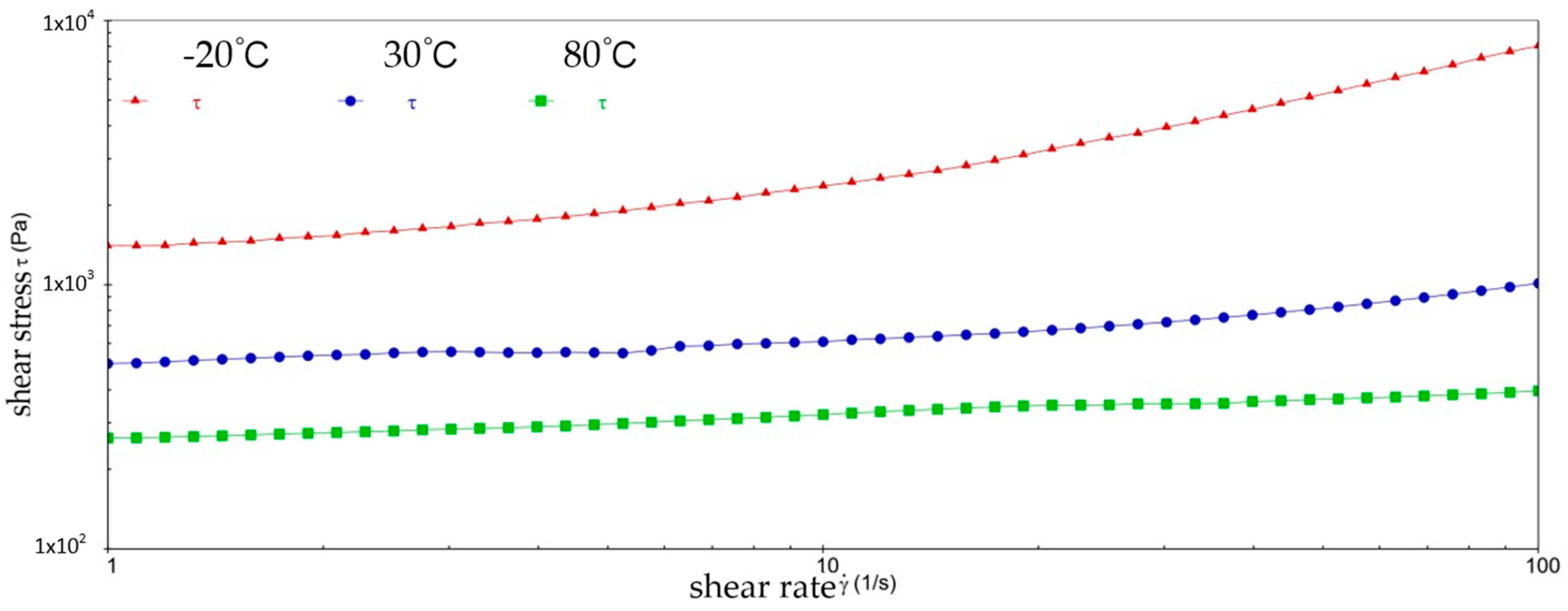
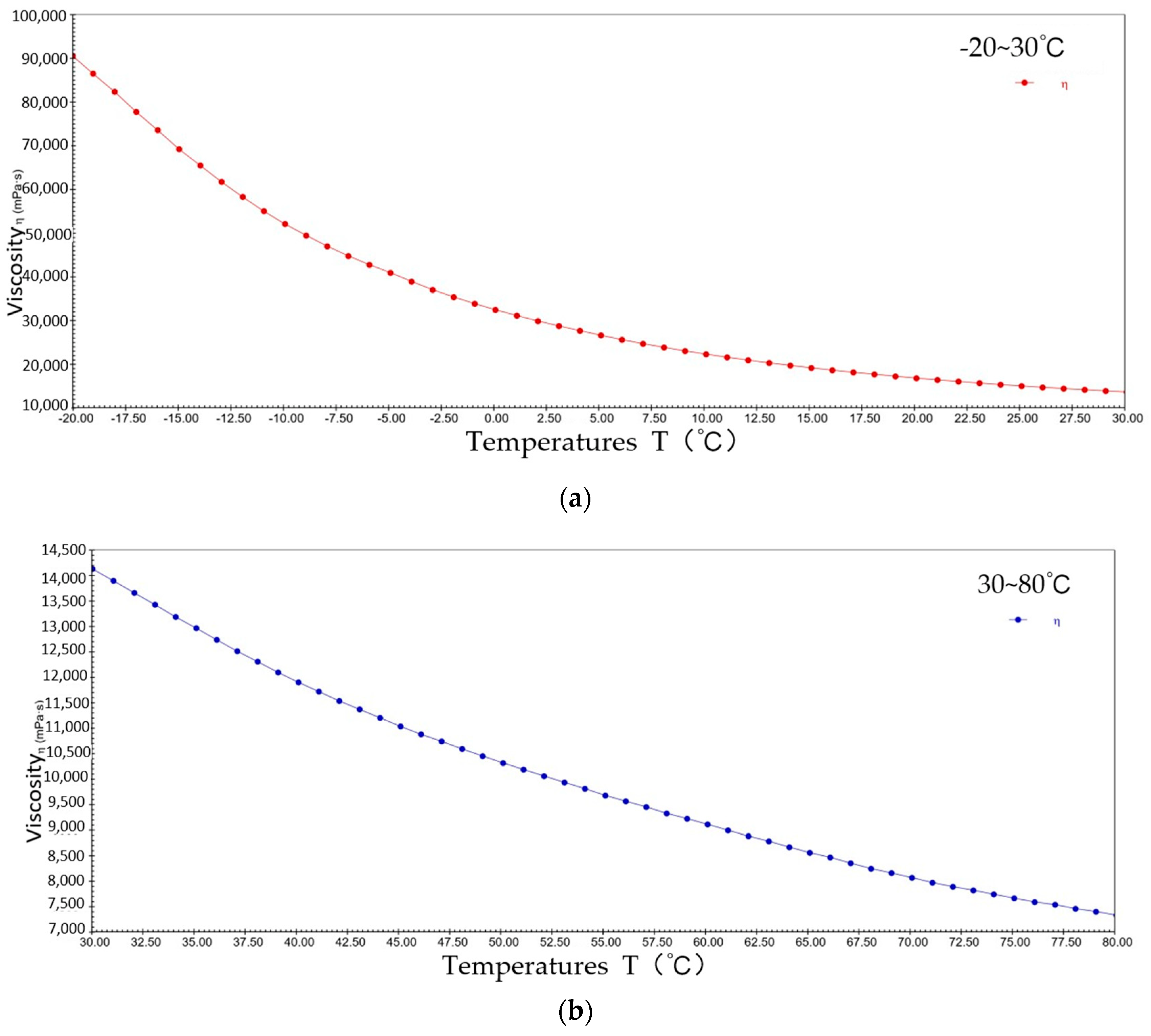
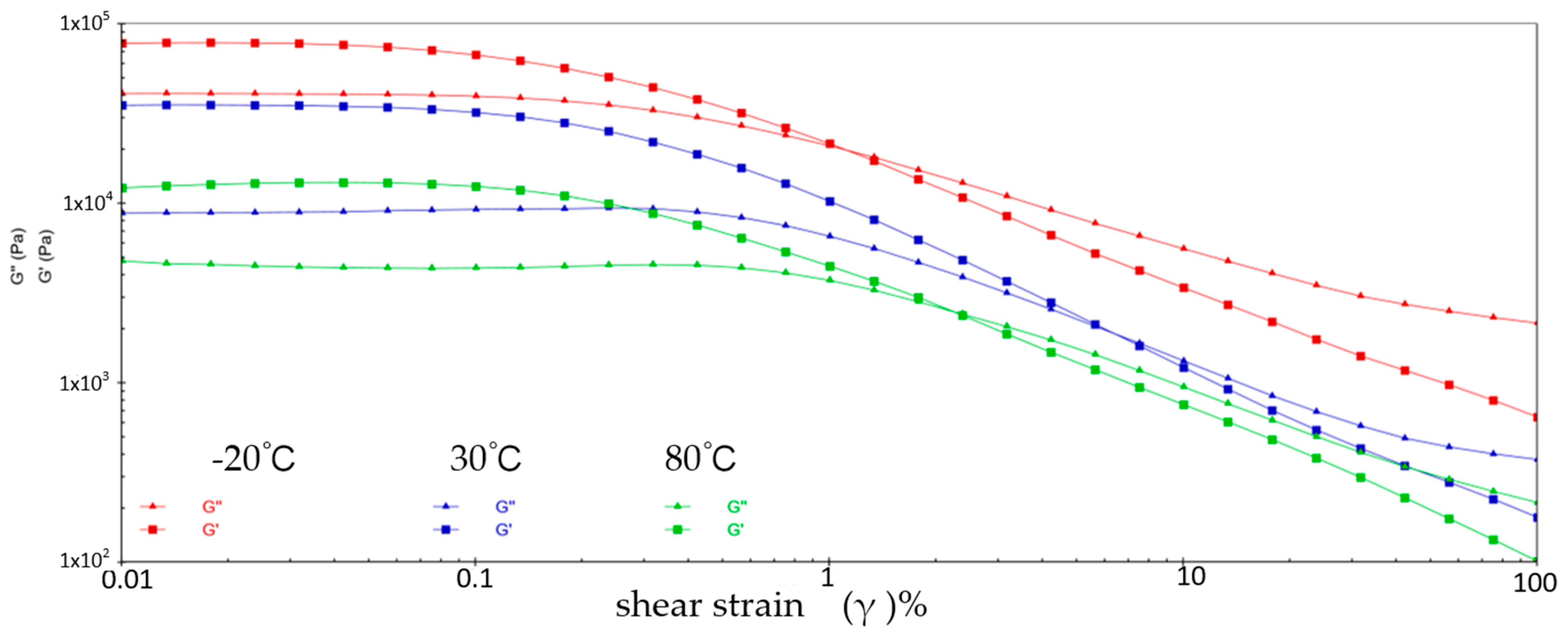
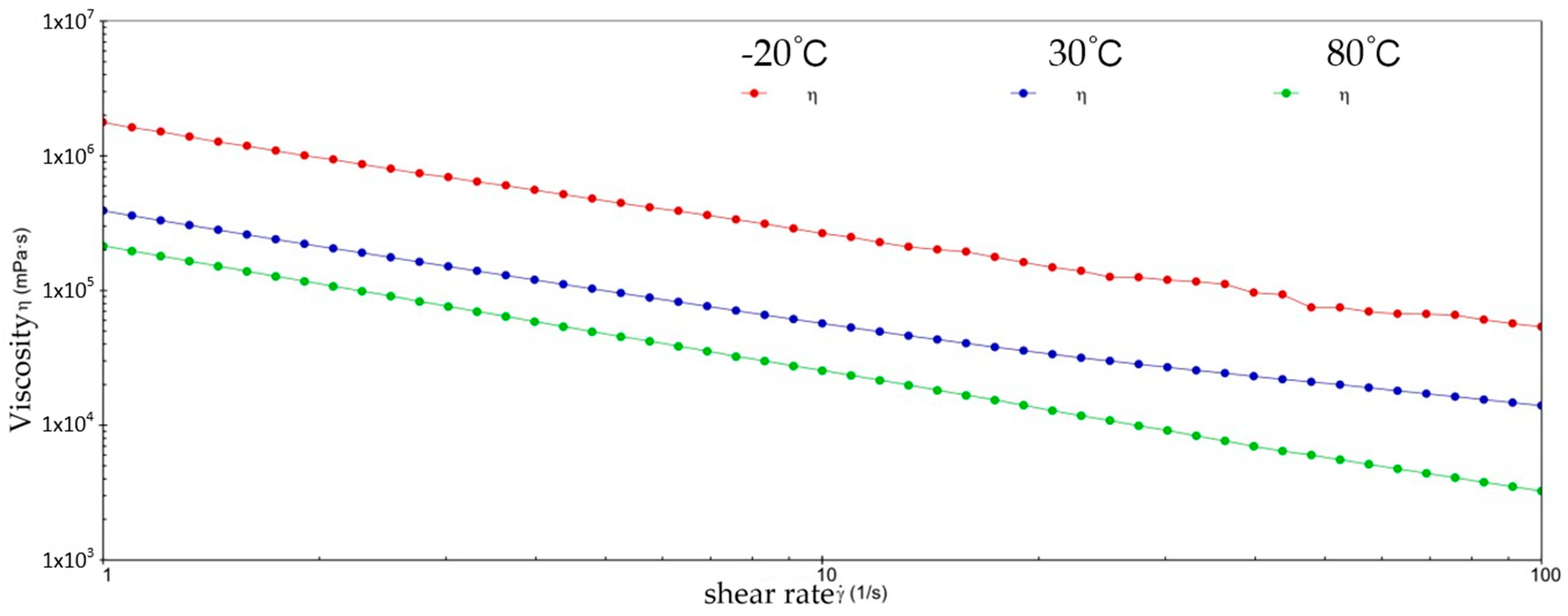

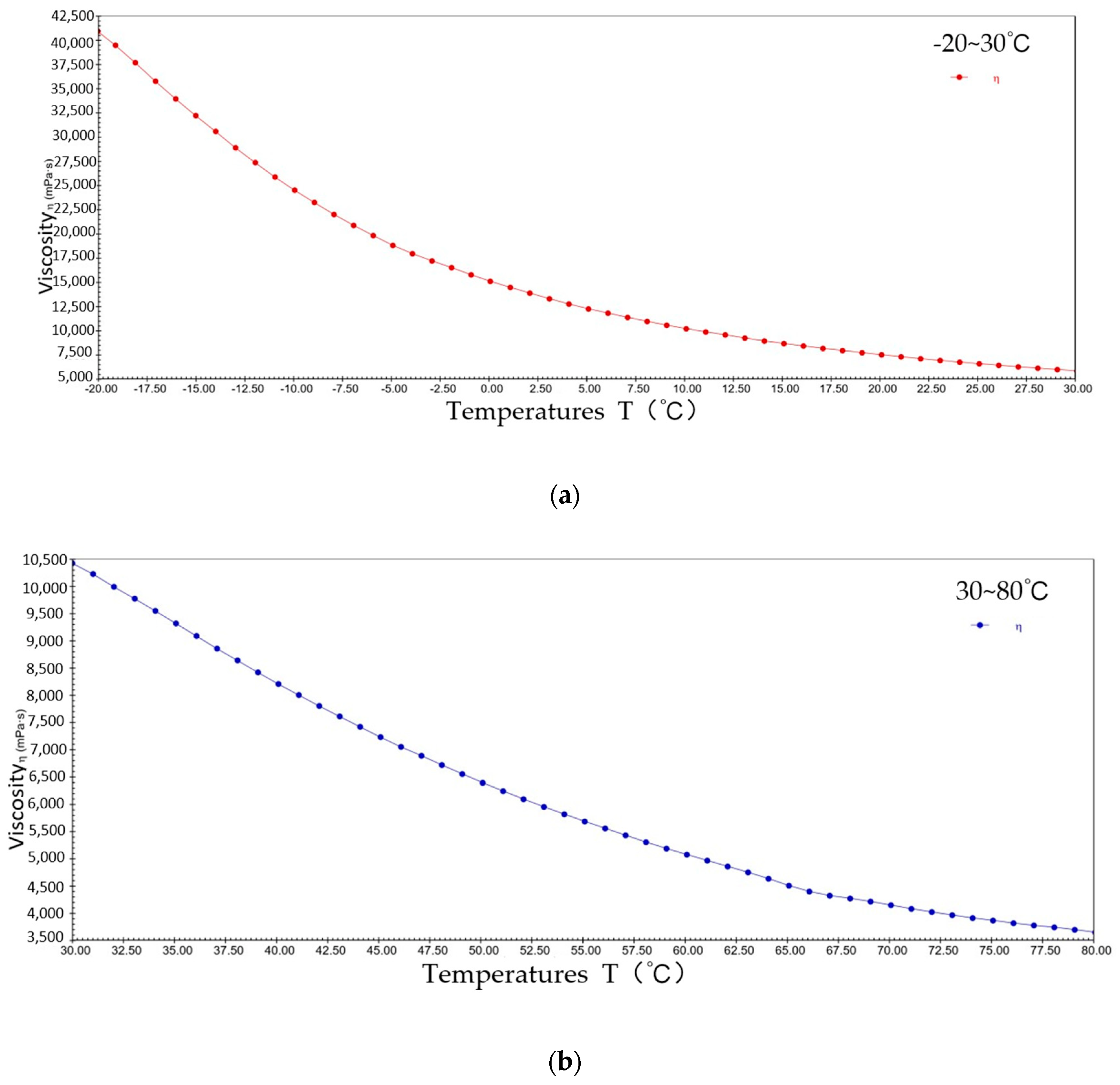
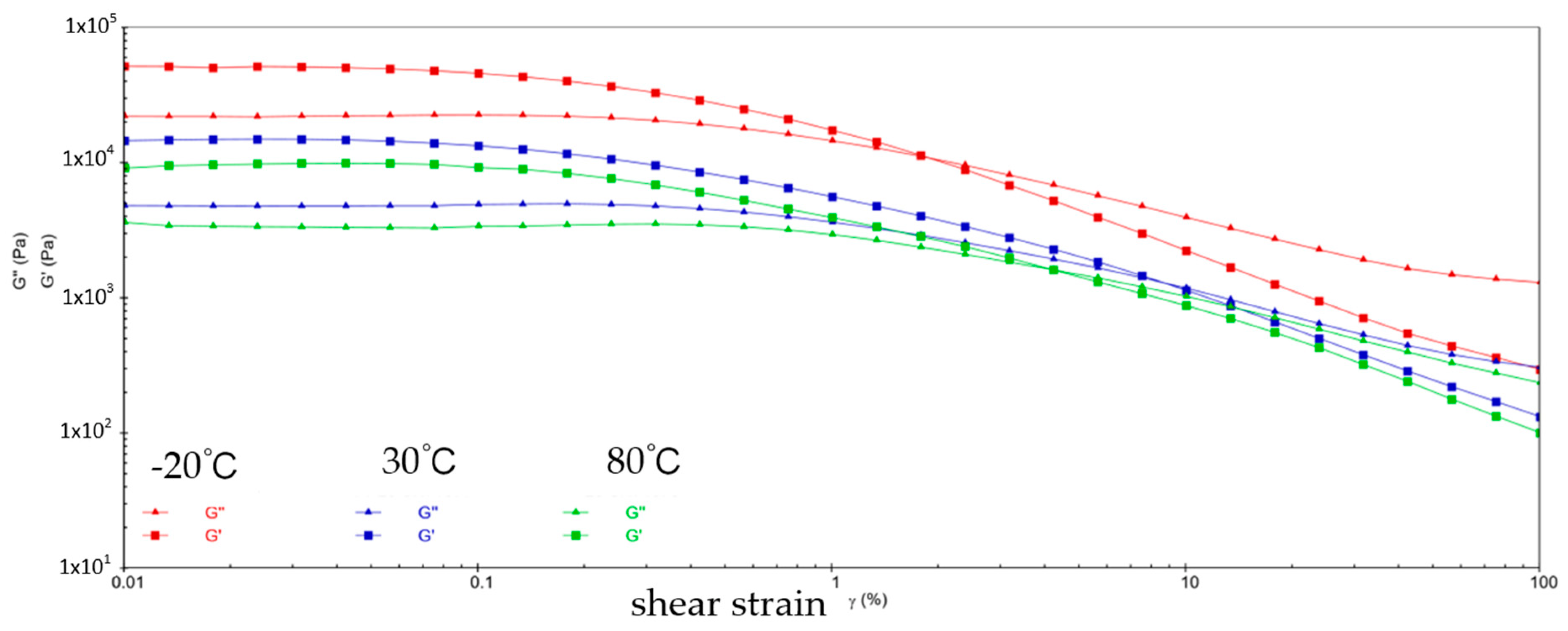
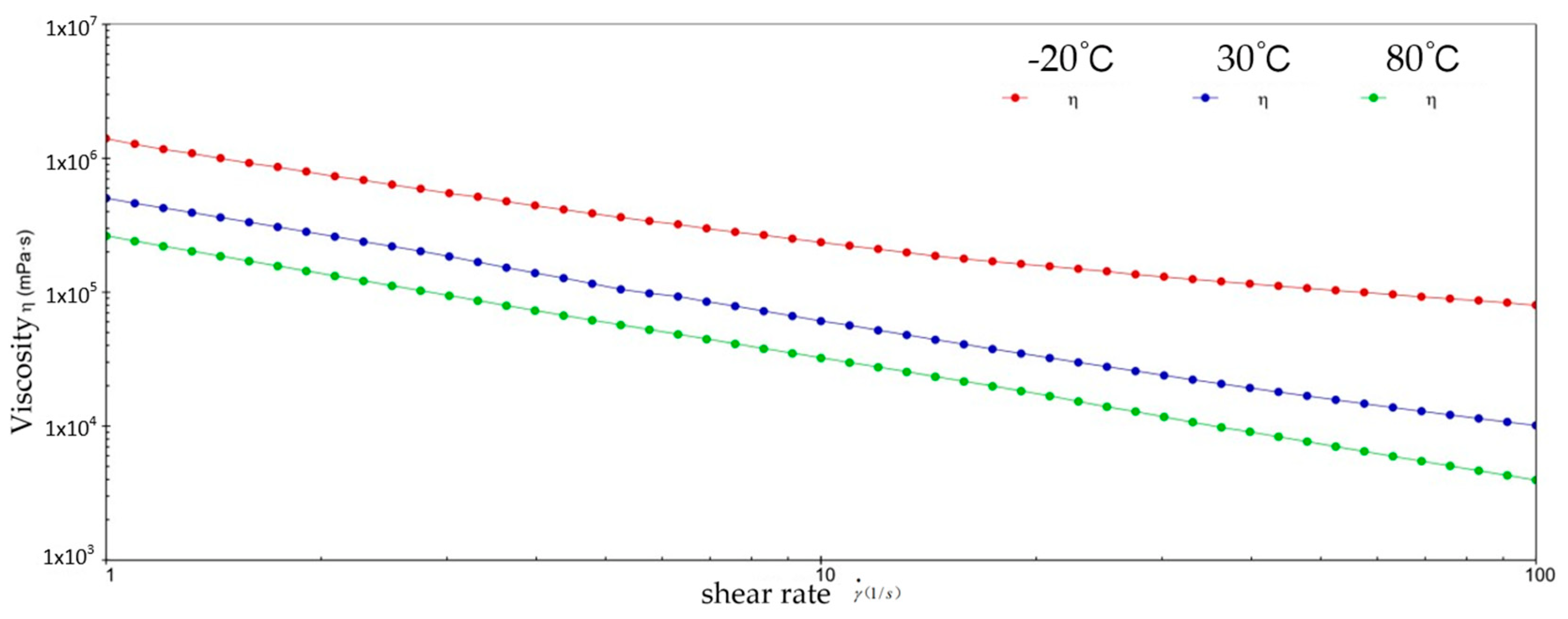

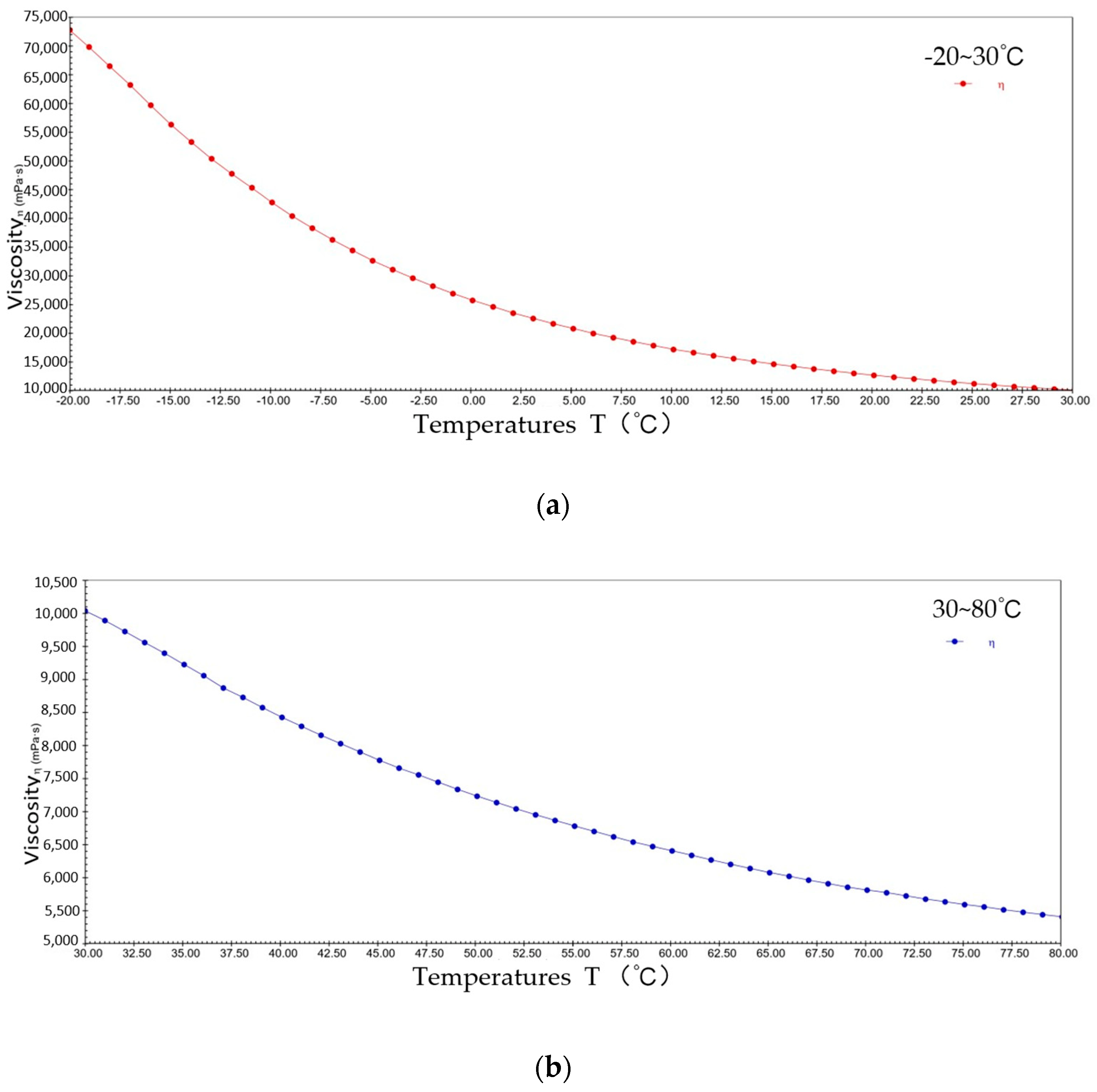
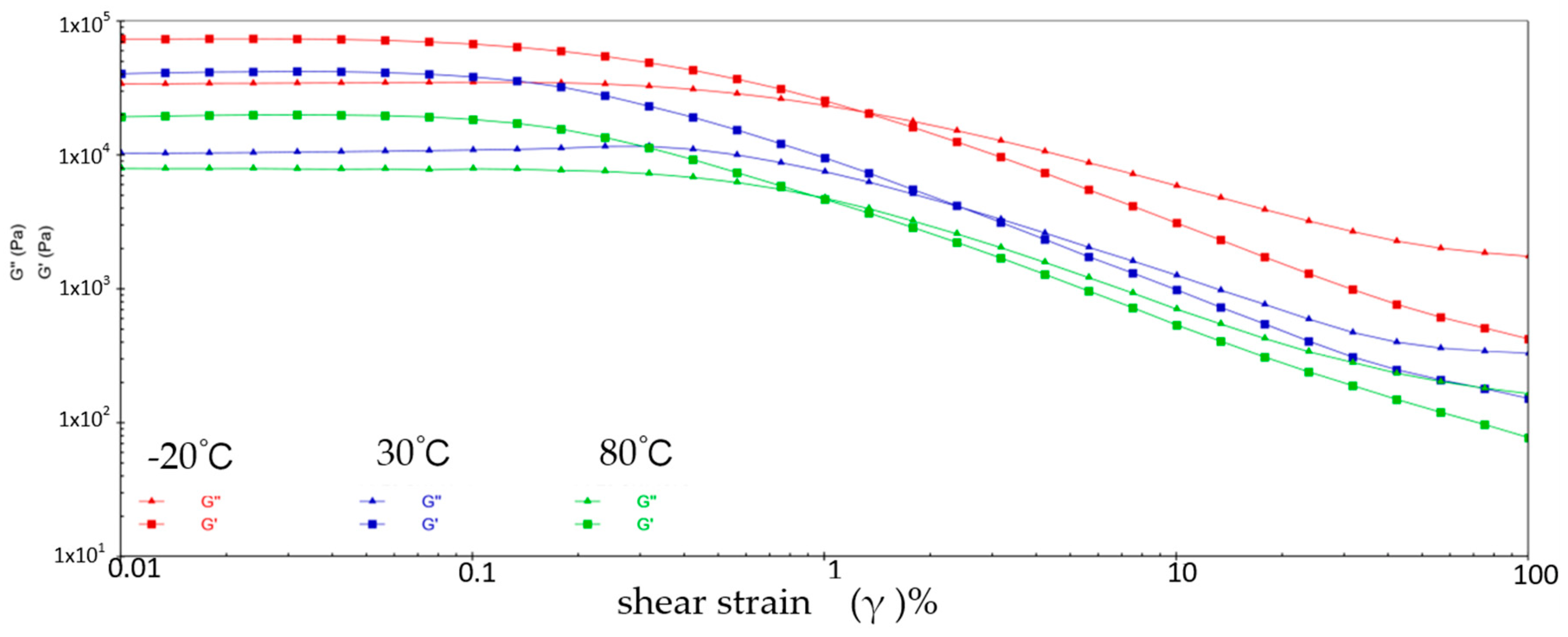

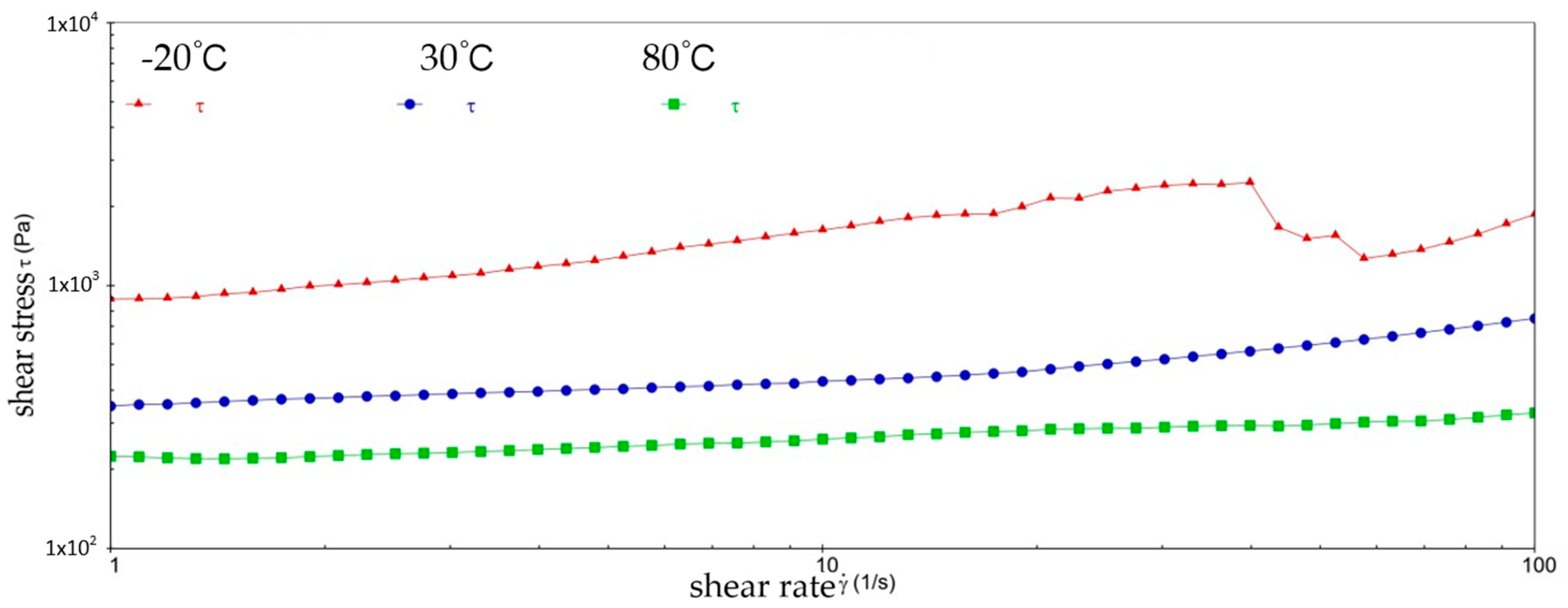


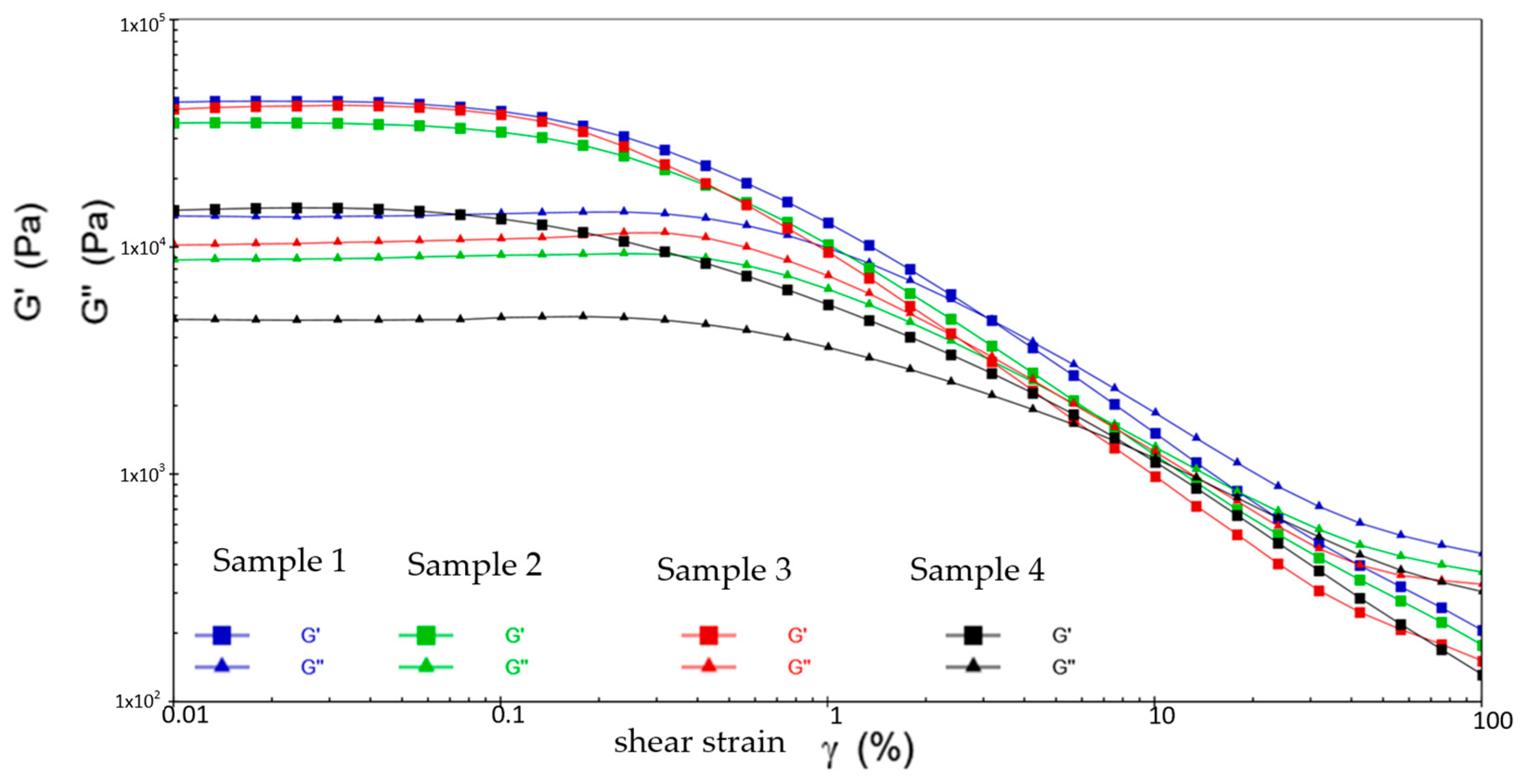
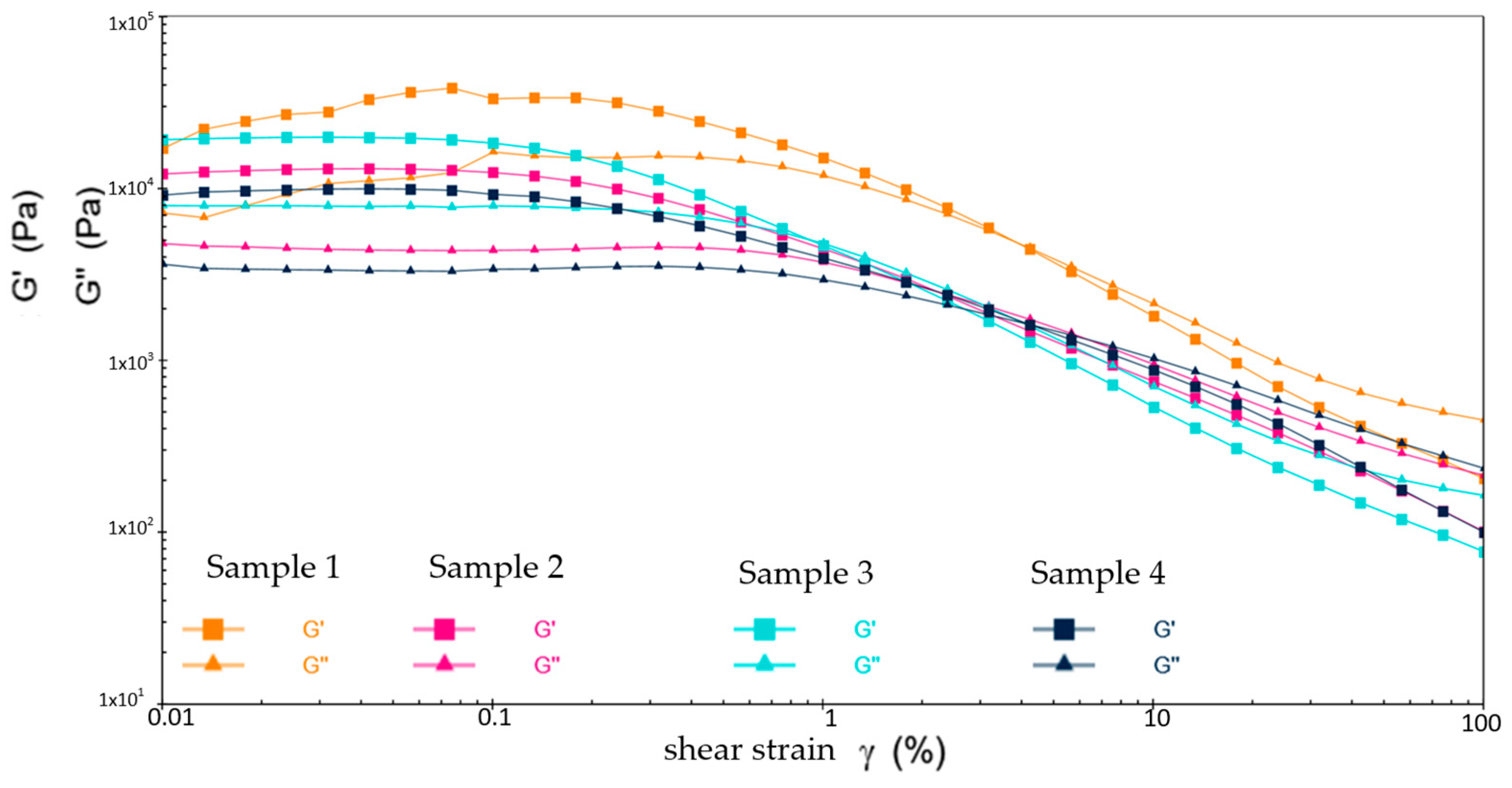




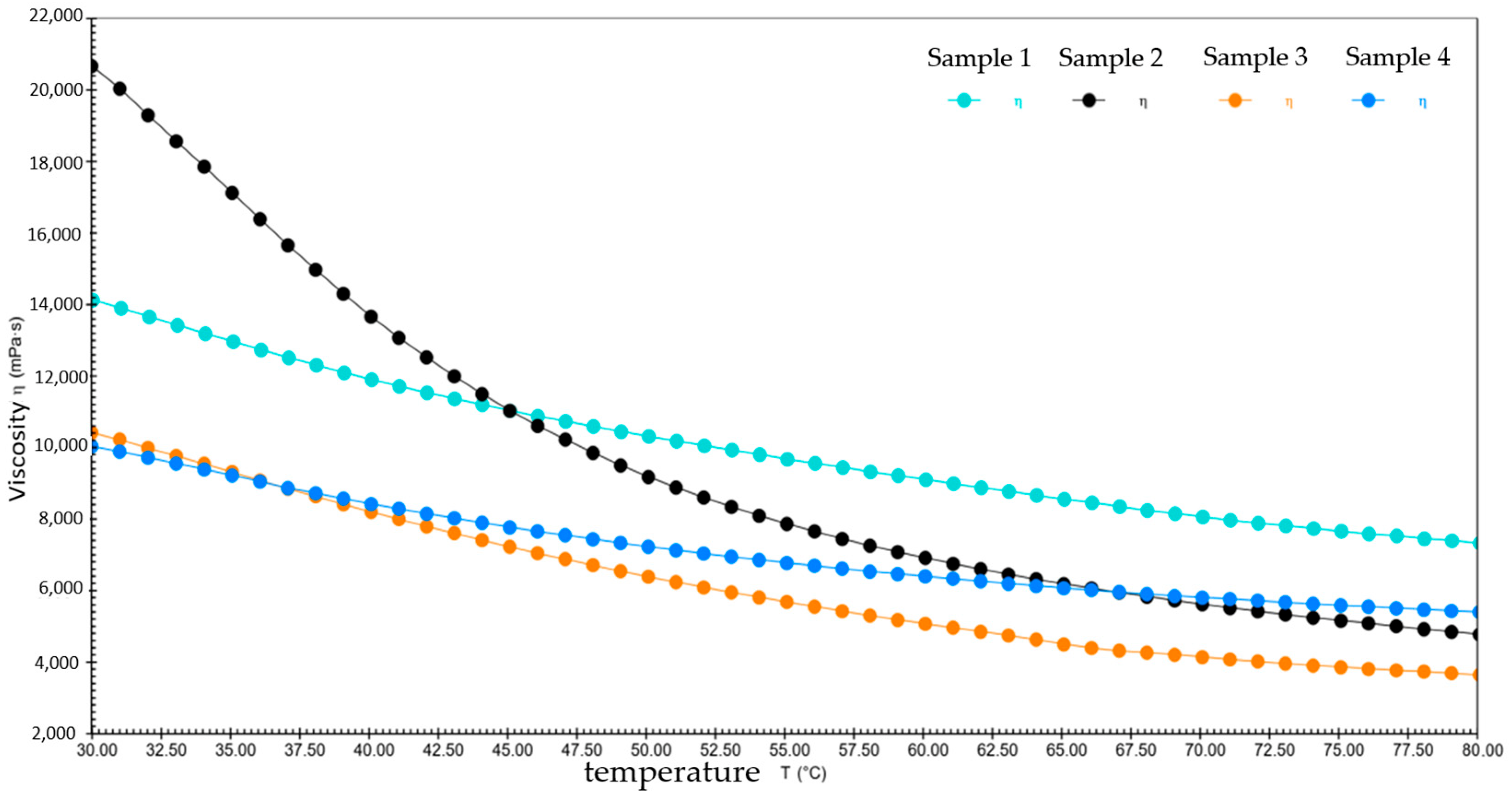
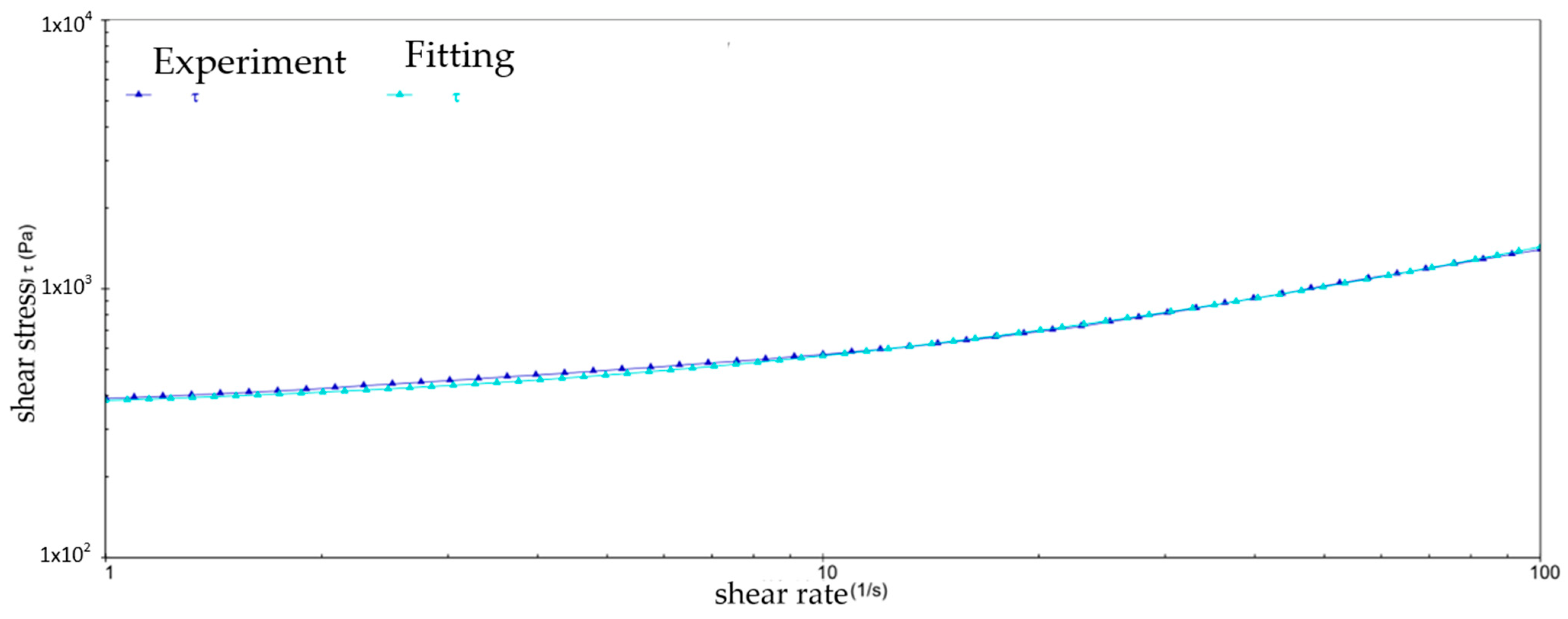



| Reference Number | Author(s), Year | Major Findings |
|---|---|---|
| [22] | Mousavi et al., 2020 | The addition of ZnO nanoparticles to diesel fuel was found to significantly improve its tribological characteristics |
| [23] | Mousavi et al., 2019 | The friction and wear tests revealed that MoS2 had no significant effect on the anti-wear performance of diesel fuel. |
| [24] | Xiong et al., 2023 | It was demonstrated that fluorinated graphite and fluorinated graphene had a significant effect on the taper inlet, stencil oil separation, and evaporation loss of polyurea grease. |
| [25] | Liang et al., 2023 | It was found that calcium carbonate nanoparticles can improve the anti-wear and friction reduction characteristics of grease. |
| [26] | Xu et al., 2023 | Various gel-state greases were prepared, and their characteristics were improved. |
| [27] | Dai et al., 2024 | Improved application of ester lubricants in weak-gel drilling fluids. |
| [28] | Jopen et al., 2023 | Comparison of polyester organogel formation in three different base oils. |
| [29] | Schwack et al., 2020 | It was concluded that grease lubricants with low base oil viscosity and high osmolality have higher anti-wear characteristics. |
| [30] | Ng et al., 2020 | It was found that graphene nanoparticles can significantly reduce the friction and wear of bearings. |
| [31] | Saidi et al., 2021 | It was found that MoS2 nano-additives have high antiwear and friction reduction capabilities. |
| [32] | Wu et al., 2022 | The additives of hexagonal boron nitride and calcium carbonate nanoparticles as base oils were prepared. |
| [33] | Li et al., 2023 | A gel grease for wind turbine generator bearings was prepared. |
| [34] | Rosenkranz et al., 2021 | Four different gel greases are produced on the basis of mineral base oils. |
| [35] | Pinilla-Peñalver et al., 2024 | A new method for synthesizing polyurethane-based aerogels is proposed. |
| Samples | Temperature Range (°C) | Starting Viscosity (mPa·s) | Ending Viscosity (mPa·s) | Percentage (%) |
|---|---|---|---|---|
| Sample 1 | −20~30 | 90,541 | 13,619 | 84.9 |
| Sample 2 | 11,675 | 2676.4 | 77.1 | |
| Sample 3 | 40,928 | 5837.9 | 85.7 | |
| Sample 4 | 72,771 | 10,062 | 96.2 |
| Samples | Temperature Range (°C) | Starting Viscosity (mPa·s) | Ending Viscosity (mPa·s) | Percentage (%) |
|---|---|---|---|---|
| Sample 1 | 30~80 | 14,127 | 7329.2 | 48.1 |
| Sample 2 | 20,674 | 4777.9 | 76.8 | |
| Sample 3 | 10,426 | 3646.8 | 65.1 | |
| Sample 4 | 10,038 | 5404.6 | 45.2 |
| Samples | Temperature/(°C) | Fitting Equations () | Fit Factor/(R2) |
|---|---|---|---|
| Sample 1 | −20 | 0.9998 | |
| 30 | 0.9996 | ||
| 80 | 0.9814 | ||
| Sample 2 | −20 | 0.9512 | |
| 30 | 0.9991 | ||
| 80 | 0.9898 | ||
| Sample 3 | −20 | 0.9959 | |
| 30 | 0.9997 | ||
| 80 | 0.9966 | ||
| Sample 4 | −20 | 0.9884 | |
| 30 | 0.9995 | ||
| 80 | 0.9659 |
Disclaimer/Publisher’s Note: The statements, opinions and data contained in all publications are solely those of the individual author(s) and contributor(s) and not of MDPI and/or the editor(s). MDPI and/or the editor(s) disclaim responsibility for any injury to people or property resulting from any ideas, methods, instructions or products referred to in the content. |
© 2024 by the authors. Licensee MDPI, Basel, Switzerland. This article is an open access article distributed under the terms and conditions of the Creative Commons Attribution (CC BY) license (https://creativecommons.org/licenses/by/4.0/).
Share and Cite
Peng, H.; Zhao, D.; Shangguan, L.; Li, S.; Cheng, R.; Li, Y. The Optimization Study of Rheological Characteristics of Wind Power Grease Based on Gel-State. Gels 2024, 10, 253. https://doi.org/10.3390/gels10040253
Peng H, Zhao D, Shangguan L, Li S, Cheng R, Li Y. The Optimization Study of Rheological Characteristics of Wind Power Grease Based on Gel-State. Gels. 2024; 10(4):253. https://doi.org/10.3390/gels10040253
Chicago/Turabian StylePeng, Han, Defang Zhao, Linjian Shangguan, Songyin Li, Ruixue Cheng, and Yanchi Li. 2024. "The Optimization Study of Rheological Characteristics of Wind Power Grease Based on Gel-State" Gels 10, no. 4: 253. https://doi.org/10.3390/gels10040253
APA StylePeng, H., Zhao, D., Shangguan, L., Li, S., Cheng, R., & Li, Y. (2024). The Optimization Study of Rheological Characteristics of Wind Power Grease Based on Gel-State. Gels, 10(4), 253. https://doi.org/10.3390/gels10040253






